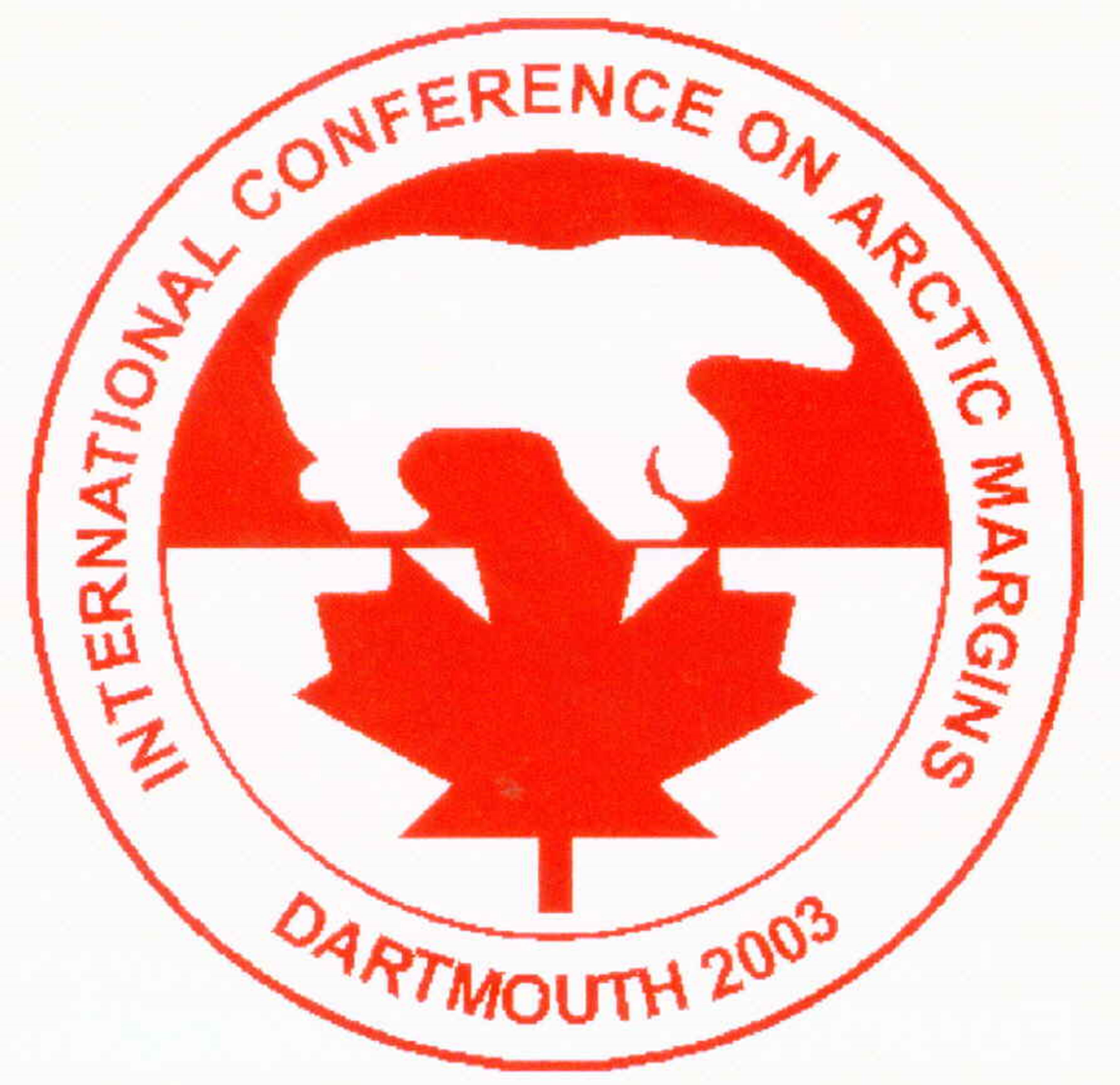
SUMMARY OF CONFERENCE
(Dartmouth, Nova Scotia, September 30-October 3, 2003)
Hosted by Natural Resources Canada, Geological Survey of Canada (Atlantic) Bedford Institute of Oceanography.
- 130 participants
- Featuring 9 technical sessions
- Workshops
- Supported by the Canadian Polar Commission and MMS
- A special meeting of the Nansen Arctic Drilling Program was held
- Field Trip: Marine Geophysical Tour of Halifax Harbour aboard the Harbour Queen
General Sessions
- Circum-Greenland Tectonics
- Oil and Gas Reserves/Gas hydrates
- Ridges and Basins in the Arctic Ocean
- Article 76-Law of the Sea
- Geodynamic Significance of Magmatism in the Arctic
- Atlantic versus Pacific tectonic regimes in the evolution of the Arctic Ocean
- Circum-Arctic epeirogeny (vertical motions): Tectonic and glacial
- Modern Processes on Arctic Continental Margins such as Climate change, Coastal processes and Environmental Issues
- Tectonic Framework
- New Technologies including Arctic Drilling
Poster sessions covering the above general session topics.
Proceedings, edited by Robert Scott of Cambridge Arctic Shelf Program and Dennis Thurston, BOEM and published as OCS Study MMS 2006-003 available on the BOEM Alaska webpage.
At each of the ICAM meetings a number of topics are highlighted. One new theme for the ICAM IV was Science issues relating to United Nations Convention on Law of the Sea (UNCLOS) Article 76. Five nations (Russia, Norway, Denmark, Canada and the United States) have the potential of extending their continental shelves into the Arctic Ocean. New data collected to make the claim for additional territory will improve the scientific knowledge base of the Arctic Ocean.
A number of sessions were organized to have broad participation either by region or by scientific discipline. The Geodynamic Significance of Arctic Magmatism was a circum-Arctic theme put forward to give scientists working in geographically separated areas the opportunity to compare and contrast their findings. Vertical motions in the Arctic: Tectonic and glacial brought together a number of different disciplines with related problems. Atlantic versus Pacific tectonic regimes in the evolution of the Arctic Ocean was featured so that the Arctic Ocean plate tectonics could be set in a global prospective. The Tectonic Framework session provided an overview of Arctic specific tectonic issues. Circum-Greenland Tectonics was another unifying theme. The well studied seas adjacent Norway and east Greenland provide standards to be emulated and insights into the more difficult to access regions. New information collected on Nares Strait 2001 marine expedition could be highlighted and placed in the context of other activities in the Labrador Sea. Hydrocarbon potential and gas hydrates are of continuing interest in the Arctic and it was important to be updated on this subject.
Another new theme for ICAM conferences was Arctic Margins: Coastal and Marine Environmental Geoscience in a Changing Climate; Implications for Development. This session allowed the important geological information on changing climate and the effect on the Arctic population to be examined.
During the meeting, at the start of each day, a key note address was held. Three topics were chosen that were to both have overall appeal and to provide specific knowledge on the activities in the country where the meeting was held. Two of the presentations that addressed Canadian issues of broad interest were: Oil and Gas Potential of Canada's Northern Basins: Future Exploration Trends by Benoit Beauchamp and Implications of a 500 metre deep borehole in frozen sediments in the Canadian Beaufort Shelf presented by Steve Blasco. The data gleaned from the scientific program on US submarines called SCICEX was presented by Bernard Coakley in a talk called The Lomonosov Ridge, Top to Bottom.
At 12:10 a.m. Monday September 29, 2003, Hurricane Juan made landfall in Nova Scotia as one of the most powerful and damaging hurricanes to ever affect Canada. Hurricane Juan's maximum sustained wind speed at landfall in Nova Scotia was measured at 100 mph (160 km/h). The majority of severe property damage was concentrated in the core of the Halifax Regional Municipality where ICAM IV was held.
Power lines were down, bridges were closed and roads were blocked by fallen trees. The arrival of Hurricane Juan on the day prior to the meeting (September 30 - October 3, 2003) altered all plans that had been initiated at least a year in advance. Bedford Institute of Oceanography where the meeting was to be held was without power as well as most of the hotels in the Halifax-Dartmouth area. Claudia Currie head of the organizing committee noticed that the Ramada Hotel had power. Space for a day was booked until the power was restored at BIO. (It actually was not restored until the meeting was over.
Meanwhile a low tech solution was devised to let participants know where the meeting was to be held. Volunteers walked or drove to the hotels in the region and put up hand written notices of the meeting location. In all, twenty volunteers from the Geological Survey of Canada and Fisheries and Oceans, leapt into action. Nelly Koziel managed the additional costs that were not anticipated. With no commercial space available for a reception, Ron Macnab volunteered his home for a wine and cheese party for the 130 participants. The lobster supper was the supreme accomplishment of the volunteers who managed to find a local hall that had power, a supplier for the lobsters and a caterer to provide the rest. The field trip went as planned in unusually warm and calm conditions after the storm.
The Fourth International Conference on Arctic Margins closed with a successful outcome and quite a story to tell.
Dr. H. Ruth Jackson
Scientist
Natural Resources Canada
Geological Survey of Canada
Bedford Institute of Oceanography

